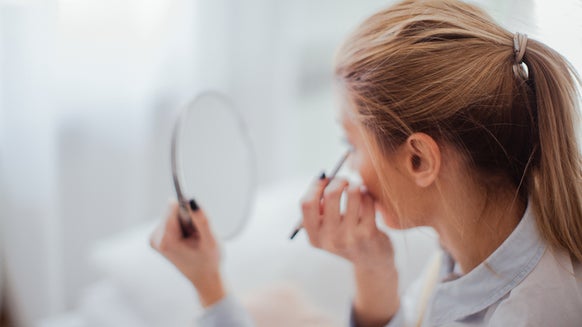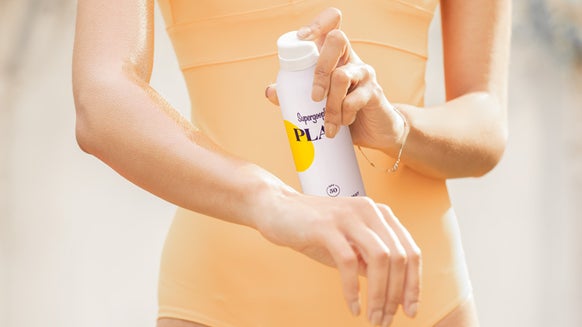Kegel Exercise: What Is It and Why You Should Do It
You’ve probably read that it’s a good idea to practice Kegels to strengthen your pelvic floor muscles. If you’re wondering why that’s important, though, here’s the deal: Most women (and some guys, too) can benefit from Kegels to have better sex (yep!) and help with urinary incontinence—which is often an issue for ladies who’ve recently given birth. Curious to know more? Here’s a closer look at some of the benefits and exactly how to perform a Kegel step by step.
What Is the Kegel Exercise?
Your pelvic floor muscles (the ones that relax to allow you to pee and control the stream of your urine) can weaken and stretch out for a number of reasons, including pregnancy, childbirth, surgery, aging or even from excessive straining from constipation or coughing. They can even weaken if you are overweight. Kegels, quick contractions of those pelvic floor muscles, can help tighten that region back up. “Kegels are exercises recommended to help strengthen the pelvic floor muscles,” explains Dr. Carolyn Delucia, the head gynecologist at VSPOT Medi-spa. “They were developed by Dr. Arnold Kegel, a gynecologist, in 1948 to help women strengthen their pelvic floor after childbirth and to help maintain or regain urinary continence,” she adds.
Benefits of Kegel Exercises
The main benefits of Kegels are to improve and maintain bowel and bladder functions, according to the National Association for Continence. For someone experiencing bladder leakage, regularly practicing Kegels can mean not having to rely on wearing panty liners and longer time in between trips to the restroom. It’s generally considered safe to practice Kegels during and following pregnancy. Many women experience some incontinence postpartum, but men can also perform Kegels to improve their sex lives. “Everyone benefits from Kegels, even though they were developed for women,” says Delucia. “The main goal is to strengthen the muscles to aid in urinating continence, but they also may strengthen the intensity of orgasms in men and women,” she explains. That’s because Kegels may increase the blood flow to our sexual regions and for women, tighten up the area around the vagina.
How to Properly Perform a Kegel
The most complicated part of getting started with Kegels may be identifying the right muscles to squeeze and hold during the exercise. The simple way to make sure you’ve got it right is to squeeze your pelvic floor while you are urinating to stop the flow of urine. Once you’ve felt the sensation, you don’t want to perform Kegels while urinating, though. That can actually weaken your pelvic muscles over time and lead to a urinary infection. Ideally, you want to do them with an empty bladder. Breathe in and out during the exercise and don’t strain the muscles of your abdomen, buttocks or legs.
Once you’ve got the movement down, you should perform Kegels regularly to experience the benefits. “The most common recommendation is to tighten the muscles as tight as possible for 10 seconds, for 10 sets of 10 a day,” Delucia notes. That might seem like a lot of work, but the good news is that Kegels can be done from essentially anywhere—while you are driving or watching Netflix, for example. No one will be able to tell you’re doing them!
Using a Kegel Device
If you find it difficult to perform Kegels on your own—a Kegel device may help. There are different types of devices, such as vaginal weights, wands and Kegel trackers to help confirm you are performing Kegels correctly and even track your progress. The Elvie Kegel Exercise Trainer* easily inserts into the vagina and connects to an app on your smartphone. It gives you instant feedback with each Kegel you perform so you know you are squeezing correctly. Plus you can follow along with five-minute pre-designed workout games on the app. That makes performing Kegels more enjoyable than doing them on your own.
Can Kegels Benefit Your Skin?
One unexpected benefit of Kegels is that they may leave your skin looking healthier, too. Some yoga instructors believe practicing a move called the Kundalini root lock (similar to a pelvic Kegel combined with rapid and deep yoga breaths) tones both the pelvic muscles and directly tones your facial muscles as a result. After this move, you may experience a glow similar to the one some women get post-sex. “The skin always looks better when muscles are tight underneath,” adds Delucia. “So by tightening the muscles ‘down there,’ the skin looks better, too,” she notes.
Precautions to Note
Delucia says most people can perform Kegels without a problem. However, pregnant women should consult with their doctors before performing Kegels. They are only safe during a healthy pregnancy. In addition, Kegels won’t benefit women who experience severe urine leakage or overflow incontinence (leaking small amounts of urine with a full bladder.)

From the latest hair and makeup trends to the best solutions for your skin issues, we've got all your beauty concerns covered!










